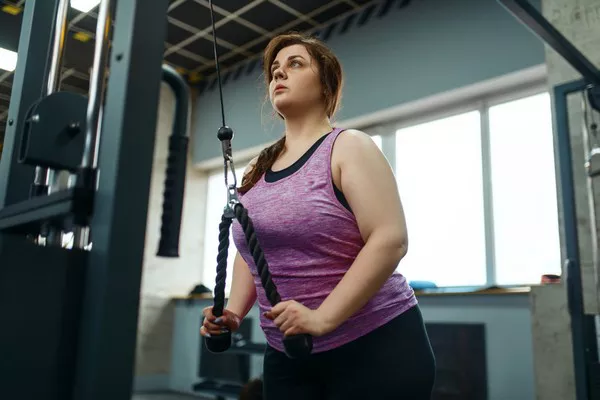Orange is often associated with citrus fruits or Halloween, but for hundreds of thousands of Orangetheory Fitness members across the United States, the color represents something deeper: a passionate commitment to personal health and fitness.
Whether you’ve spotted one of the eye-catching, high-energy Orangetheory studios in your city or seen friends posting about the “Orangetheory nation” or “OTF life,” the brand’s unmistakable presence is hard to ignore. Since the first studio opened in Fort Lauderdale, Florida in 2010, Orangetheory Fitness has grown into a nationwide phenomenon with more than 1,300 locations.
The signature one-hour workout was created by physiologist and Orangetheory co-founder Ellen Latham. Her goal was to develop the “ultimate workout,” helping people break through fitness plateaus and unlock their full physical potential. Here’s an in-depth look at what makes Orangetheory’s training method unique, and whether it might be the right fit for your goals.
A Three-Part Workout Targeting Strength, Endurance, and Power
Each 60-minute session is designed to condition the entire body, divided into three key components: strength, endurance, and power. The strength portion involves a mix of weight training, TRX suspension exercises, and functional fitness movements. Endurance training typically takes place on the treadmill, rower, or using bodyweight exercises. Finally, the power element challenges participants with sprints and high-intensity intervals performed on both the treadmill and rower.
Unlike many traditional fitness classes, Orangetheory is less about how many push-ups or miles you can complete and more about how hard you’re willing to work. All members wear heart rate monitors during workouts, allowing them to personalize their efforts and track intensity in real time.
According to Dr. Brittany Leboeuf, a research scientist at Orangetheory Fitness, this data-driven approach allows both coaches and participants to monitor exertion levels and adjust accordingly—whether to push harder or pull back for safety. “Every class is designed to be accessible and adaptable. Our coaches are professionally trained to offer real-time modifications based on individual needs,” she said.
Every Workout Can Be Customized
About half the class takes place on the treadmill, where participants choose between walking, jogging, or running based on their fitness level. The second half alternates between rowing machines and floor-based exercises like squats, crunches, or assisted pull-ups. Each station offers options to match the member’s current capabilities.
“When members are guided through treadmill segments, coaches offer variations for power walkers, joggers, and runners,” Leboeuf explained. “On the floor, coaches tailor modifications for those who need them.”
Orangetheory also places a strong emphasis on inclusivity. The program is designed for individuals of all fitness levels, including those with injuries or mobility issues. “I knew I needed a low-impact way to build wattage, and high box jumps just aren’t great for people with knee problems,” said Latham. “That’s why I added the rower alongside treadmill options for walking, jogging, and running—so everyone can find their fit.”
No Two Workouts Are the Same
While each workout follows a general format involving the treadmill, rower, and floor exercises, no two sessions are exactly alike. The daily programming varies, offering new challenges and keeping participants engaged. Still, some workouts are intentionally repeated within a month to help members track their progress.
Every month, a certified team of coaches, physiologists, and program designers develops new workout routines targeting different muscle groups. These routines go through internal testing and approval before being released across studios.
“We build in benchmarks like the 1-mile run to assess cardiovascular fitness,” said Leboeuf. Members can track these metrics using Orangetheory’s mobile app to monitor progress and set personal goals.
Inclusive Pricing and Membership Tiers
Membership pricing varies by location, but the New York City area provides a representative breakdown: 10 classes cost $320, 20 classes are priced at $600, and a 30-class package is available for $850.
Monthly memberships are also available: a basic plan with four classes per month costs $119, the elite membership offers eight classes for $199, and the premier membership includes unlimited classes for $279 per month—or $249 per month with a six-month commitment. Additional classes can be purchased at discounted rates.
Building a Supportive Fitness Community
Beyond physical workouts, Orangetheory aims to foster a sense of community. “Our coaches, staff, and members work together to create a vibrant, supportive environment based on shared goals,” said Leboeuf. “That community spirit extends far beyond the studio floor.”
She emphasized the importance of “Lobby Life”—interactions that take place before and after classes where members share advice, celebrate milestones, and strengthen connections. “This is one of the most special aspects of Orangetheory. These bonds lead to accountability, motivation, and genuine friendships.”
To reinforce this communal spirit, Orangetheory hosts a variety of events, including DriTri (a triathlon-style challenge using the treadmill, rower, and bodyweight exercises), the “Transformation Challenge,” and themed weeks such as “Hell Week” featuring mystery workouts.
Can Orangetheory Help You Lose Weight?
Many members join Orangetheory with weight loss goals in mind—and the program is specifically designed to support such outcomes. “We combine cardiovascular and strength training to offer a total-body workout that enhances fitness, builds muscle, and supports metabolic health,” said Leboeuf.
However, the brand also promotes a broader definition of success. “Weight loss isn’t the only goal,” she noted. In the brand’s “Transformation Challenge,” members are encouraged to track changes in body composition rather than just pounds lost, using tools like InBody scans. Among nearly 60,000 participants, the average weight loss over eight weeks was 5.4 pounds.
According to current federal physical activity guidelines, adults should aim for 150 to 300 minutes of moderate-intensity or 75 to 150 minutes of vigorous-intensity exercise per week. Regular participation in Orangetheory classes, combined with a balanced, nutritious diet, can help meet these targets and support long-term weight management.
A Fitness Experience That Goes Beyond the Workout
Orangetheory’s combination of heart-rate-based training, personalized intensity, inclusive coaching, and community-focused programming has earned it a loyal following. With its daily variations, data-driven approach, and accessible format, it appeals to fitness beginners and seasoned athletes alike.
Whether you’re seeking weight loss, strength gains, endurance improvements, or just a welcoming environment to stay active, Orangetheory Fitness offers more than just a workout—it offers a movement.
Related Topics
































